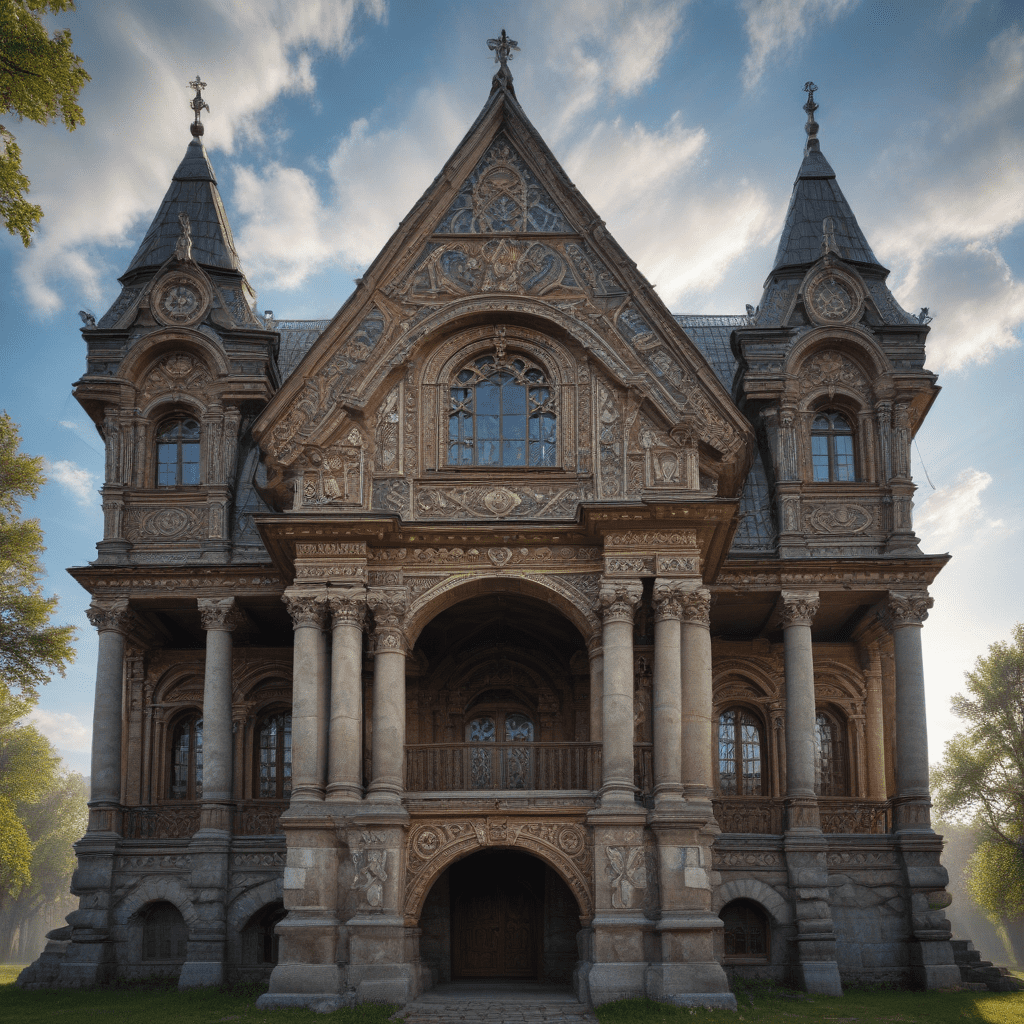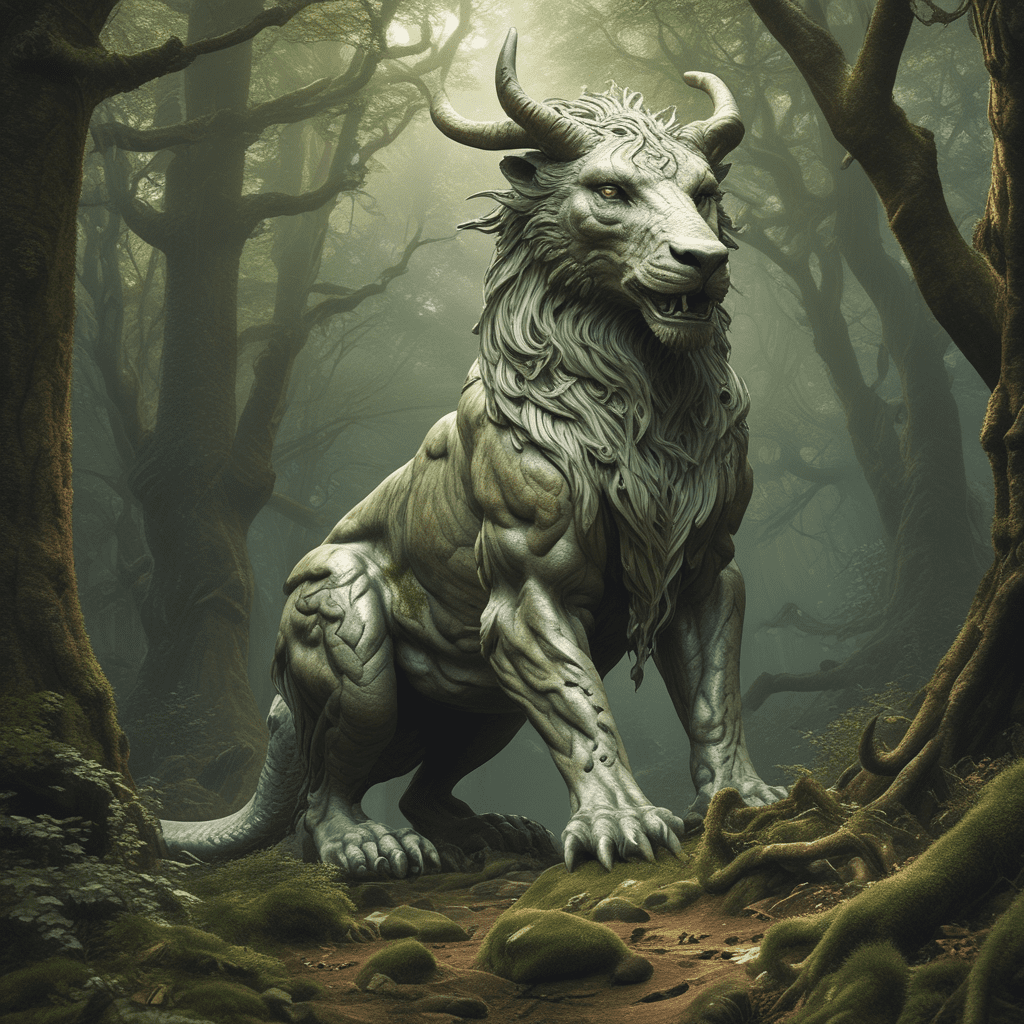The Influence of Slavic Mythology on Traditional Architecture
1. Introduction
Slavic mythology, a captivating tapestry of beliefs, legends, and superstitions, profoundly influenced the architectural landscape of Eastern Europe. Slavic folklore is rich with tales of nature spirits, deities, and mystical creatures, all of which left an enduring mark on the region's traditional architecture. This influence can be seen in the architectural elements, symbolism, and rituals associated with Slavic dwellings.
2. Slavic Mythology and Its Core Beliefs
Slavic mythology is characterized by a deep reverence for nature and a belief in a multitude of supernatural beings. Slavic deities, such as Perun (god of thunder) and Veles (god of the underworld), played a significant role in the lives of ancient Slavs. Nature spirits, including Leshy (forest spirit) and Rusalka (water spirit), were believed to inhabit the natural world, influencing human affairs. These beliefs permeated every aspect of Slavic culture, including architecture.
3. The Role of Nature and Supernatural Beings
Nature played a central role in Slavic mythology, and this is reflected in traditional architecture. Slavic dwellings were often built in harmony with the surrounding environment, utilizing natural materials such as wood and stone. The placement of a house was carefully considered, with attention paid to the direction of the sun, the proximity to water sources, and the presence of protective trees. Supernatural beings were believed to dwell in nature, so the location of the house was crucial to ensuring their favor and protection.
4. Architectural Elements Inspired by Slavic Folklore
Slavic mythology inspired a range of architectural elements that can still be seen in traditional houses today. One common feature is the use of carved wooden decorations, depicting scenes from mythology or symbols of protection. These carvings, known as "nalichniki," are often found around windows and doors, serving as a way to ward off evil spirits. Other architectural elements, such as the sloped roof and the use of gables, are also believed to have roots in Slavic folklore.
5. The Dwelling as a Microcosm of the Universe
According to Slavic mythology, the house was not merely a shelter but a microcosm of the universe. It represented a sacred space, a place where the divine and human realms intersected. The interior of the house was divided into specific zones, each with its own significance. The stove, for example, was considered a symbol of the hearth and the center of the home, while the windows represented portals to the outside world. This symbolic division of space reflected the Slavic belief in the interconnectedness of all things.
6. Symbolism in House Design and Decoration
Slavic architecture is rich in symbolism, reflecting the beliefs and values of the Slavic people. The choice of colors, materials, and motifs used in house design and decoration was not arbitrary but had specific meanings and associations. Red, for example, was believed to possess protective powers, while white symbolized purity and rebirth. Natural materials, such as wood and stone, were preferred for their connection to the earth and their ability to withstand the elements. Geometric patterns, such as circles and crosses, were often incorporated into designs, representing the cycles of life and the interconnectedness of the universe.
7. Protective Elements and Apotropaic Symbols
Slavic folklore placed great importance on protection from evil spirits and misfortune. Traditional architecture incorporated a number of protective elements and apotropaic symbols to ward off negative influences. These included placing garlic or onions above the door to repel evil, planting protective trees around the house, and using carved symbols, such as the "Kolovrat" (sun wheel) or the "Rodovik" (family symbol), to protect the home and its occupants.
8. The Sacred Geometry of Slavic Buildings
Slavic architecture often exhibits a harmonious relationship with sacred geometry. The proportions and dimensions of buildings were carefully calculated to reflect the cycles of nature and the cosmic order. The number three, representing the Trinity, was considered sacred and often found in the design of houses and other structures. The use of geometric patterns, such as the labyrinth or the mandala, symbolized the journey of life and the connection between the microcosm and the macrocosm.
9. Rituals and Ceremonies Associated with Architecture
Architecture was closely intertwined with rituals and ceremonies in Slavic culture. The construction of a new house was a significant event, marked by specific rituals and beliefs. These rituals included placing a coin under the foundation for prosperity, sacrificing an animal to appease the land spirits, and performing a house-warming ceremony to invoke the protection of the gods. Throughout the year, various ceremonies and festivals were held in the home, connecting the sacred and the domestic realms.
10. Continuity and Transformations in Traditional Architecture
Slavic mythology and its influence on traditional architecture have evolved over time. While many traditional elements and beliefs have been preserved, the influence of other cultures and the advent of modern building materials have led to changes in architectural styles. However, the spirit of Slavic mythology continues to resonate in the traditional architecture of Eastern Europe, providing a glimpse into the rich and vibrant cultural heritage of the Slavic people.
Frequently Asked Questions (FAQs)
Q: What is the most common architectural element inspired by Slavic folklore?
A: Carved wooden decorations, known as "nalichniki," are a common feature in Slavic architecture, often depicting scenes from mythology or symbols of protection.
Q: What is the significance of the stove in a Slavic house?
A: The stove was considered the heart of the home, a symbol of the hearth and the center of the family. It was often decorated with protective symbols and used in rituals and ceremonies.
Q: What are some examples of protective elements used in Slavic architecture?
A: Protective elements include placing garlic or onions above the door, planting protective trees around the house, and using carved symbols, such as the "Kolovrat" or the "Rodovik."
Q: How is sacred geometry incorporated into Slavic buildings?
A: Slavic architecture often reflects sacred geometry, with proportions and dimensions calculated to align with the cycles of nature and the cosmic order. Geometric patterns, such as the labyrinth or the mandala, symbolize the journey of life and the connection between the microcosm and the macrocosm.
Q: What are some examples of rituals associated with Slavic architecture?
A: Rituals associated with Slavic architecture include placing a coin under the foundation for prosperity, sacrificing an animal to appease the land spirits, and performing a house-warming ceremony to invoke the protection of the gods.



